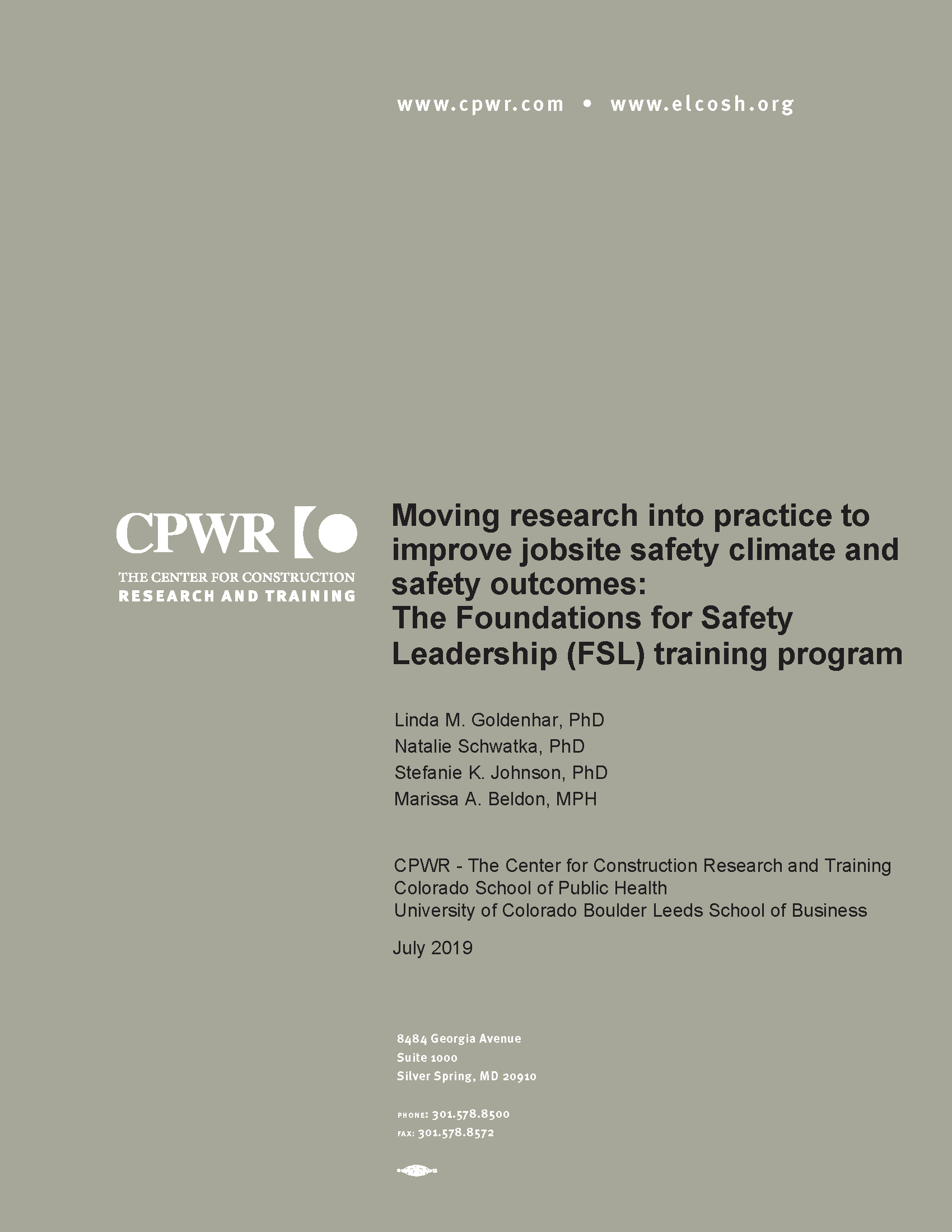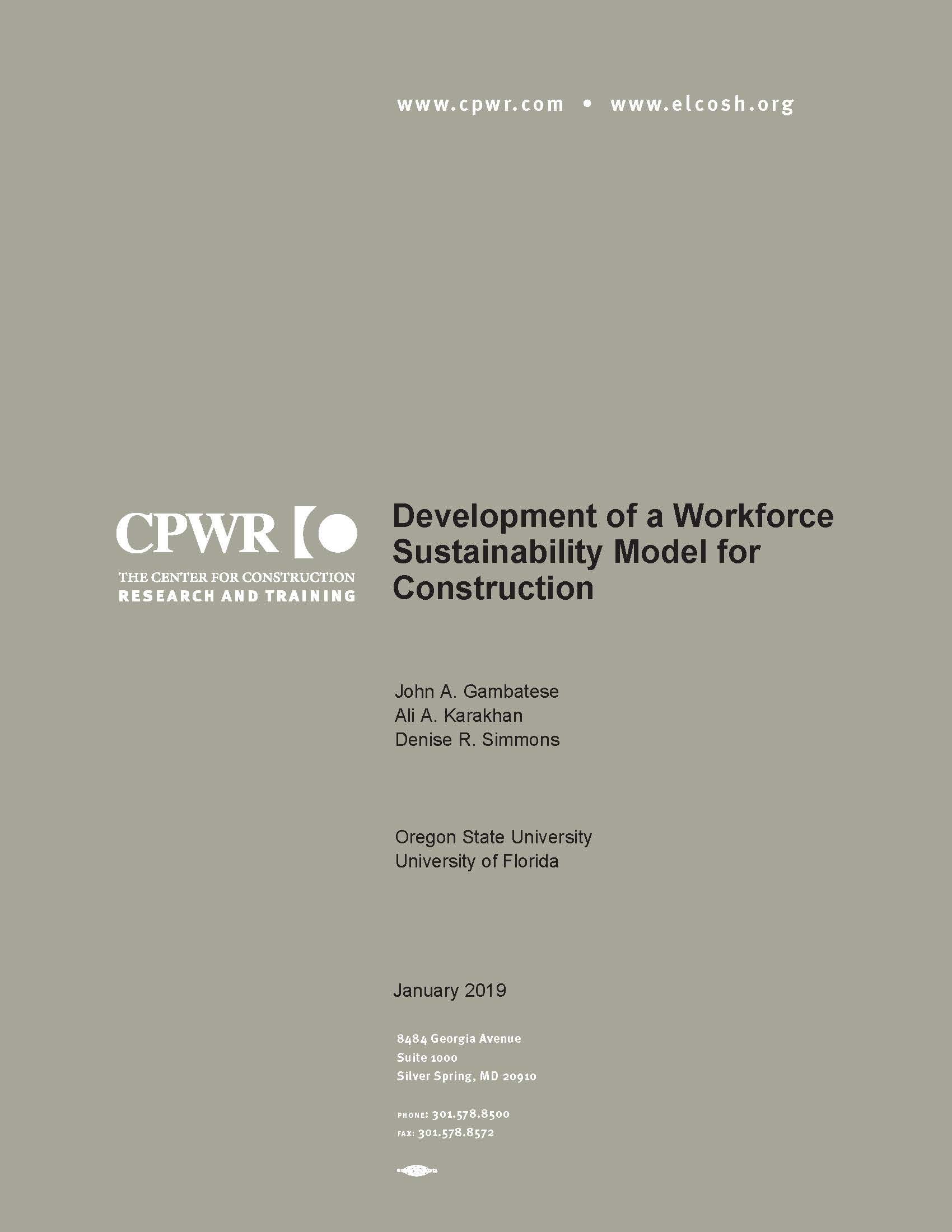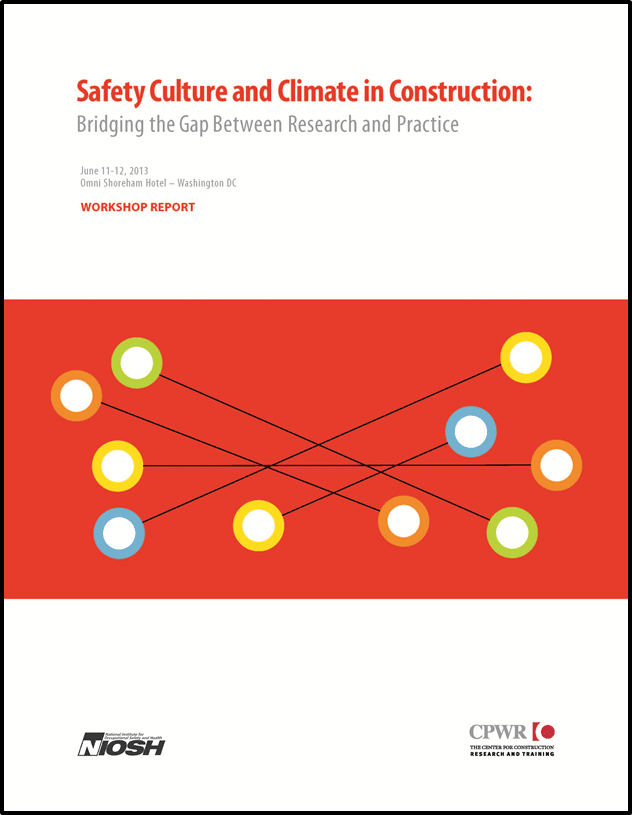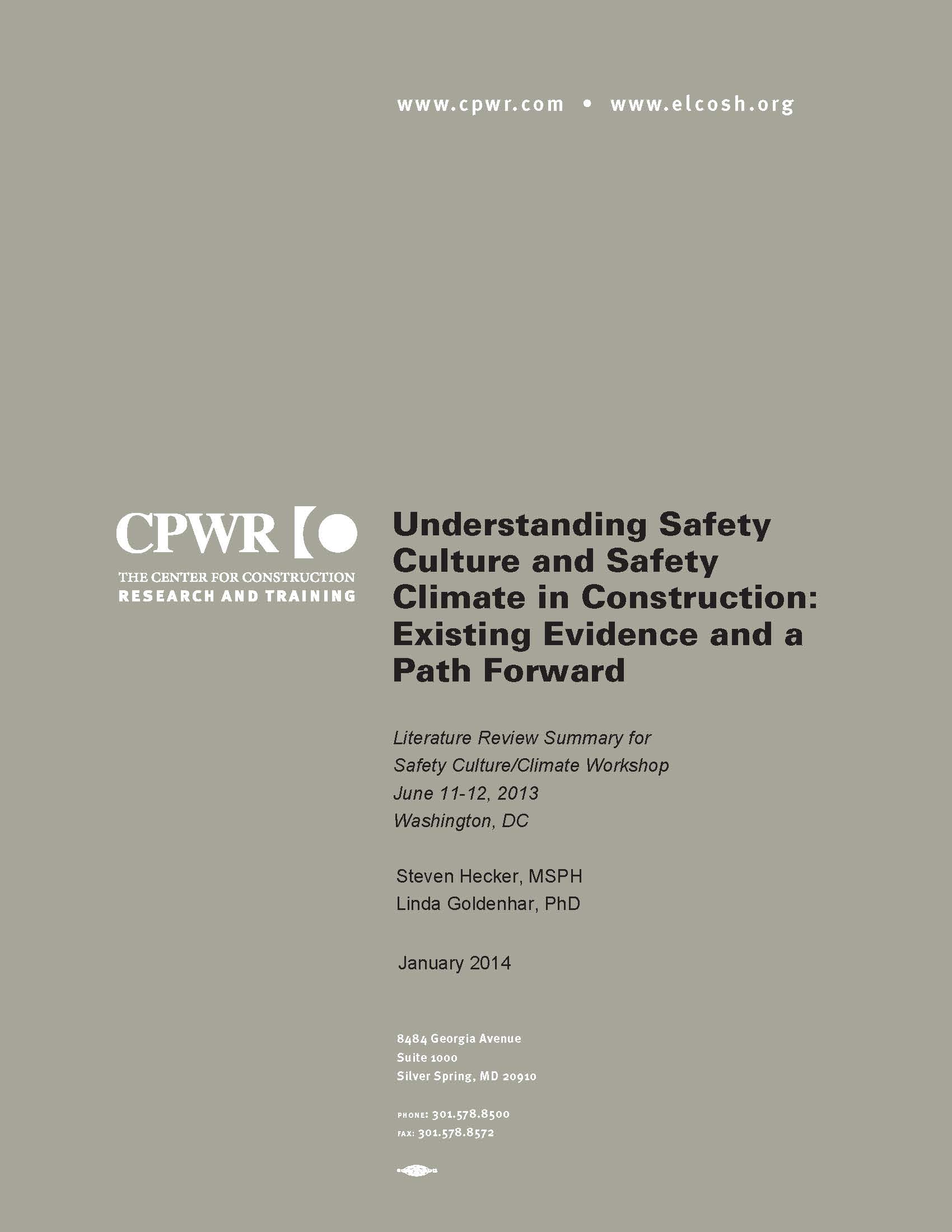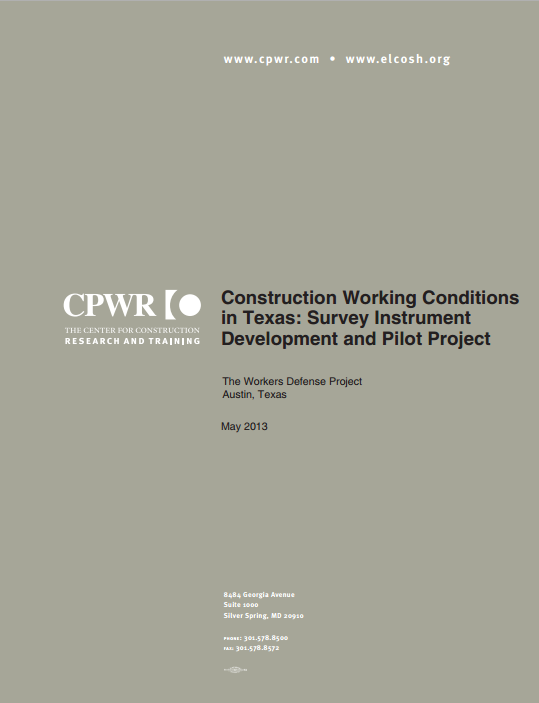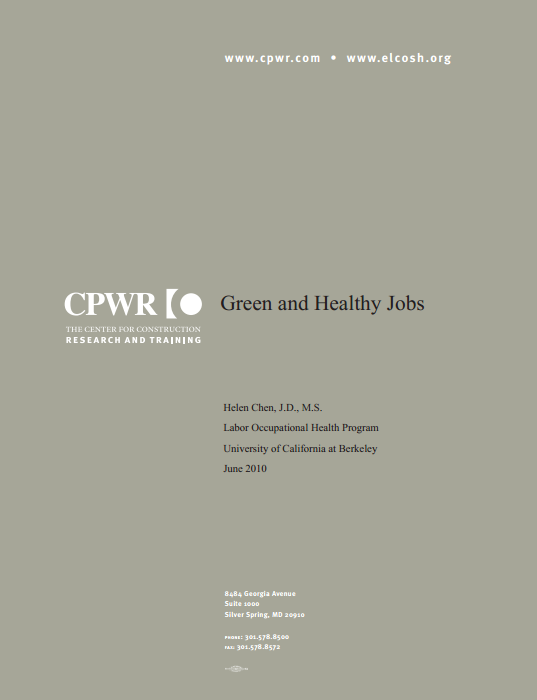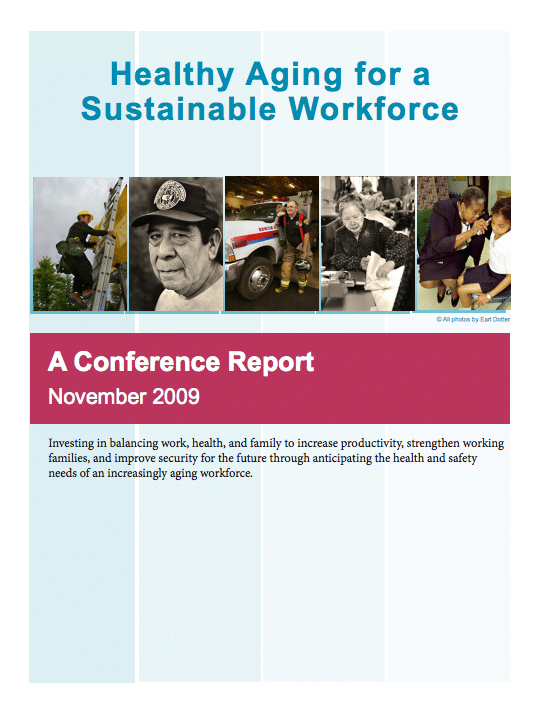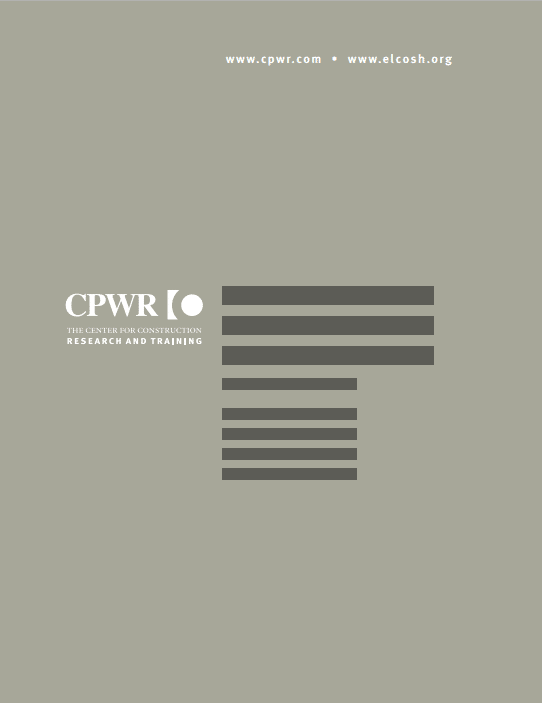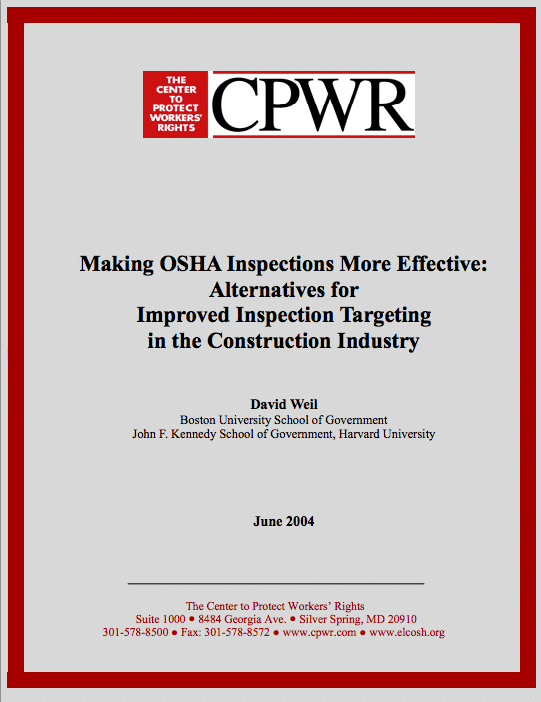Workplace Policy
Moving research into practice to improve jobsite safety climate and safety outcomes: The Foundations for Safety Leadership (FSL) training program
Linda M. Goldenhar, PhD, Natalie Schwatka, PhD, Stefanie K. Johnson, PhD, Marissa A. Beldon, MPH
This report describes how a research team used the CPWR r2p Roadmap to develop multiple outreach activities for a new construction-specific training intervention — the Foundations for Safety Leadership (FSL). Activities were highly successful in reaching key audiences, with approximately 70,000 construction foremen, lead workers and others participating in the FSL training; there were also thousands of downloads of FSL training materials and additional audiences, and industry sectors have used or adapted the FSL for their purposes.
Development of a Workforce Sustainability Model for Construction
John A. Gambatese, Ali A. Karakhan, Denise R. Simmons
Relative to other sectors, the construction workforce has experienced high turnover rates and poor safety performance over the last few decades. The industry has also struggled to retain existing workers and recruit new ones to construction careers. Using the Delphi method, the authors interviewed industry professionals and academics to identify the characteristics of a sustainable construction workforce, and to create an instrument construction employers could use to assess workforce sustainability.
Safety Culture and Climate in Construction: Bridging the Gap Between Research and Practice
(in alphabetical order) Matt Gillen, CIH, Dr. Linda M. Goldenhar, Steve Hecker, Scott Schneider, CIH
If we are to understand the degree to which safety culture and safety climate contribute to improving safety outcomes, we need to 1) agree on what safety culture and safety climate mean, 2) develop reliable and valid ways to measure them, and 3) design, implement, and evaluate interventions that actually improve them. To help address these needs, CPWR and NIOSH convened a 1½ day workshop June 11-12, 2013. This report describes the overall progression of the workshop and its individual sessions, output from the discussion groups and the workshop as a whole, and poses additional critical questions and action items for follow-up.
Understanding Safety Culture and Safety Climate in Construction: Existing Evidence and a Path Forward – A Literature Review
Hecker, Steven and Linda Goldenhar. January 2014.
Safety Culture and Safety Climate are hot topics among construction contractors these days as they grapple with how to further reduce injury rates towards achieving the goal of zero injuries. CPWR is currently engaged in gathering and disseminating best practices and tools, as well as identifying research gaps with a number of methods. Our first product of this work is this literature review, which sets out to clarify the distinction between culture and climate and offer clear conceptual definitions and measurement information for both.
Construction Working Conditions in Texas: Survey Instrument Development and Pilot Project
The Workers Defense Project. May 2013.
A survey, developed and refined through a CPWR Small Study grant, yielded interesting insights into workplace practices on Texas construction sites.
The Cost of Interpersonal Conflict in Construction
Brockman, Julie. December 2012
Interpersonal conflict is identified as one of the top occupational stressors, strongly linked to a reduction in psychological and physical health. Owners and contractors ranked conflict among project participants as the highest factor affecting project cost in previous studies. No research studies previously existed that examined the financial cost of conflict in construction. The study explores the nature of interpersonal conflict on construction projects and its financial burden. The report contains many examples of real-world incidents.
Green and Healthy Jobs
Chen, Helen. June 2010
Construction Procurement Policies That Address Health Insurance: A Cost Analysis
May, David C., and C. Jeffrey Waddoups. April 2010.
Analyzes construction costs of Ohio elementary school construction (1997-2008) and finds contractors using Responsible Contracting Policies (RCPs) that include health insurance coverage for workers generally have no statistically significant impact on final bid costs. The difference in school construction cost was the school characteristics and location, as urban schools were more costly to build than rural schools.
Healthy Aging for a Sustainable Workforce
Kirkland, Katherine and Denny Dobbin. October 2009
Genetic Testing for Beryllium: Worker Knowledge, Beliefs and Attitudes
Silver, Ken. February 2009
Making OSHA Inspections More Effective: Alternatives for Improved Inspection Targeting in the Construction Industry
Weil, David. 2004
Outlines alternatives for targeting OSHA’s routine (programmed) inspections to facilitate improved construction worker safety and health, given the enforcement agency’s limited resources. Considers targeting by – for instance – type of project, phase of construction activity, and past performance of project managers and contractors; suggests how to compare effectiveness of the proposed new approaches through pilot studies.
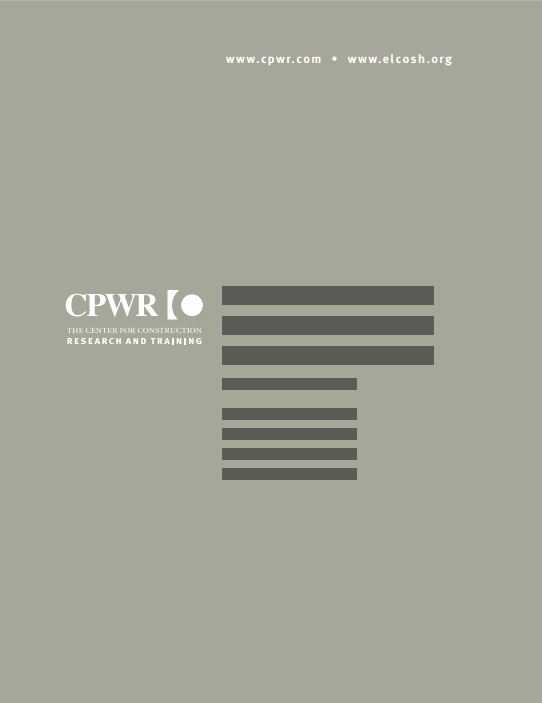
Implementing Lead-Safe Work Practices for Steel Structures: Transportation Agency Policies in 12 States
Erville, Pierre. 1995
Presents findings of survey on policies of 12 state departments of transportation involving worker protections during lead abatement of steel structures. Companion survey to Mark Goldberg and others, Occupational Blood Lead Surveillance of Construction Workers: Health Programs in Twelve States (OSH2-96).
